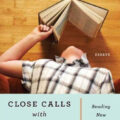Why Are There Two Reviews of Wiman’s Mandelstam?
That’s an excellent question. This isn’t the first time that we’ve covered a title more than once — Ben Mazer’s Poems has made several appearances, as we’ve become a sort of destination for those interested in his work — but it is definitely the first time we’ve reviewed a book twice in one issue. The choice would be anathema to most journals, whose (very solid) marketing-editorial strategy is to cover as many titles as possible, attracting as many separate communities as possible, and driving traffic. Honestly, we are not as interested in pleasing the grim Moloch of unique visitors and time-on-site as others are.
Still, you might ask, isn’t it overkill? If I had tried to engineer this pairing, it almost certainly would be. The essays would have been half-hearted, lacking contrast or depth enough to keep a reader’s attention, and the whole exercise would’ve amounted to nothing more than a gimmick. But the two essays came to us by chance: I suggested the critic give Wiman’s translations a look in one case; the critic wrote and submitted his essay in the other. No great editorial machination, just happy circumstance.
Stotts writes that Mandelstam was not a poet of contradictions per se, but, rather, “an architect, setting things against each other.” With this in mind, it is fitting that we should have a pair of reviews to set in contrast: one a lament, the other an ode. Besides that, it is incredibly rare to come across two intelligent engagements with a single book that reach such radically different conclusions.
Where Gould revels in the freshness and American-ness of Wiman’s renderings, Stotts is dismayed by their broken pact with the Russian texts. Gould revels in the humor and tone, Stotts finds it unsatisfying and off-putting. It isn’t only that the two critics have alternate standards (though differences do exist). They experience the tone, wordplay, music, and metaphor through their particular backgrounds, and from those experiences they arrive at a multiplicity of interpretations and aesthetic judgments.
Which leads us back to the question at hand. In book reviews, in criticism, in life, our judgments reveal something about our characters. Stotts writes, for example, of the egoism and admiration that lead so many, himself included, to the exiled Russian poet, “We want to be in the line of poets that leads through Mandelstam.” Gould writes about the early encounter with Mandelstam that brought him back to poetry and eased a difficult period in his life. Through their serious, whole-hearted, intelligent engagement with it, Wiman’s book becomes a point of self-reflection for these critics.
It will seem elementary to some of you, but it is a point worth repeating: aesthetics reveal and reinforce the variety of human experience. How is it possible that two intelligent, careful poet/critics so diverge in their judgment? This question, raised by these two essays, forces us to make a choice. We can blame, belittle, and ridicule one critic or the other, or we engage with these essays openly, accept the diversity they represent, and consider opposing views humanely. I leave it to you.
About Daniel Pritchard
Daniel E. Pritchard is the founding editor of The Critical Flame.




